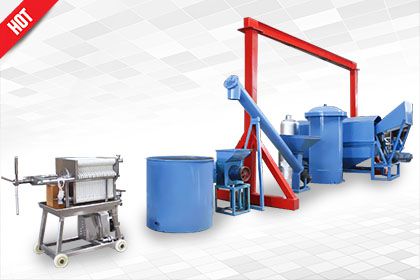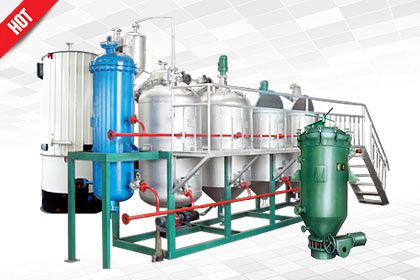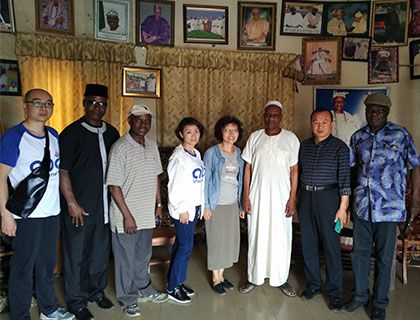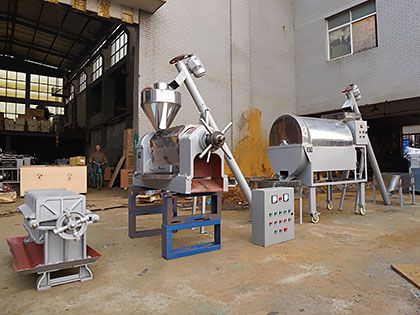Why for Palm Oil Refining Requires Bleaching Process?
 The pigment components in crude palm oil are complex, mainly including chlorophyll, carotene, flavonoids, anthocyanins and some carbohydrate, protein decomposition products. The commonly used method for crude palm oil bleaching is Adsorption Decolorization. The principle of adsorption decolorization is to absorb pigments and other impurities in hot oil by making uses adsorbents with strong adsorption ability. The adsorbents and impurities catched by adsorbents can be removed by filtering, so as to achieve the purpose of decolorization and purification. (Related Article: Palm Oil Bleaching Process >>)
The pigment components in crude palm oil are complex, mainly including chlorophyll, carotene, flavonoids, anthocyanins and some carbohydrate, protein decomposition products. The commonly used method for crude palm oil bleaching is Adsorption Decolorization. The principle of adsorption decolorization is to absorb pigments and other impurities in hot oil by making uses adsorbents with strong adsorption ability. The adsorbents and impurities catched by adsorbents can be removed by filtering, so as to achieve the purpose of decolorization and purification. (Related Article: Palm Oil Bleaching Process >>)
Adsorbents Available for Crude Palm Oil Bleaching Plant
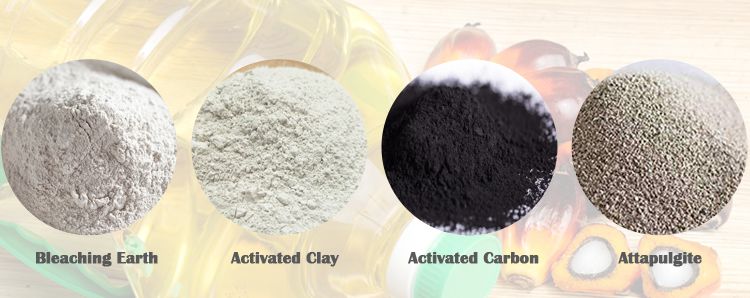
Absorbents for Palm Oil Bleaching
- Bleaching Earth
Bleaching earth, also known as bentonite, is a natural adsorbent. It is usually white or off-white. The decolorization coefficient of natural bleaching earth was lower and its decolorization ability for chlorophyll was poorer, while its oil absorption rate was higher.
- Activated Clay
It is a kind of adsorbent with high activity produced by artificial chemical treatment with bentonite as raw material. The adsorption capacity for pigments and colloidal substances is strong, especially for some basic groups or basic atomic group have a strong adsorption capacity.
- Activated Carbon
It is made of sawdust, bagasse, chaff, nut shell and other substances through chemical or physical activation. With loose pores, large specific surface area, high decolorization coefficient, and hydrophobicity, it can absorb macromolecule substances, especially reasonable for the removal of blue and green pigments, and also has strong adsorption capacity for gas, pesticide residues. But the price is expensive and the oil absorption rate is higher, so it is often mixed with bleaching earth or active white earth in actual use of Palm Oil Refinery Plant.
- Attapulgite
It is a magnesium-rich fibrous soil, mainly composed of silica. The soil is fine, with better decolorization effect, lower oil absorption rate and better filtration performance.
Crude Palm Oil Bleaching Machines
Crude Palm Oil Refining Process includes degumming, deacidification, bleaching/decolorization, deodorization, and fractionation.
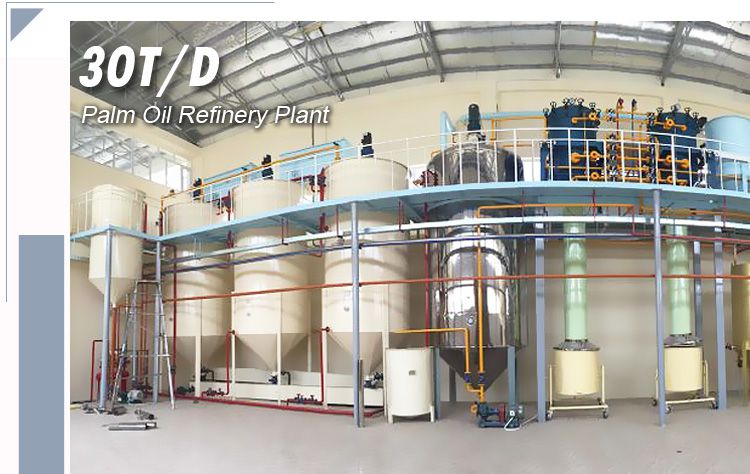
Palm Oil Bleaching Refinery Plant
Palm oil bleaching is completed palm oil bleaching machines or equipment. Bleaching is one of the more important working procedure palm oil refinery process. In addition to pigments, it can also reduce phospholipid content, peroxide value, soap content and the function of the metal ion content, so as to change palm oil color, flavor and accelerate the oxidation stability, and provide a good condition for further refining of oils and fats hydrogenation, deodorization.
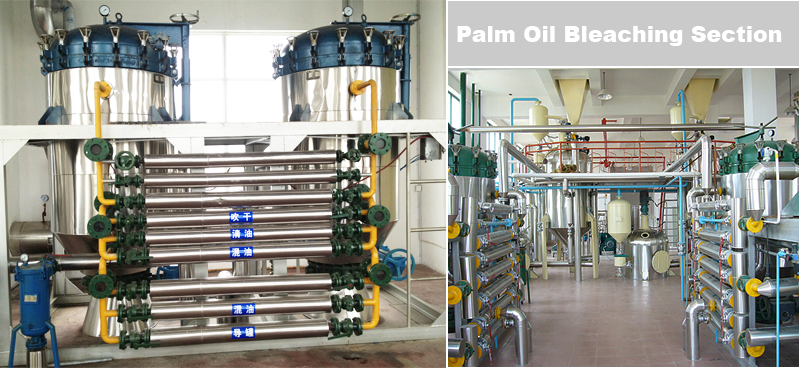
Palm Oil Bleaching Machines
Factors Affecting Palm Oil Bleaching Machine
ABC Machinery delivers to provide the BEST equipment and service for our customers. In addition, we have professional technical team to offer supports for your equipmenet operation. We are expert in palm oil processing. If there are any questions about palm oil extraction or palm oil refining, please do not hesitate to contact for helps to maximize your palm oil production profits. Below is some tips about the palm oil bleaching process.
- Adsorbents
Different adsorbents have different characteristics, should choose the appropriate adsorbents according to the actual requirements. Oil decolorization generally choose the clay with high activity, low oil absorption and fast filtration speed.
- Operating Pressure
The adsorption and decolorization process is often accompanied by thermal oxidation side reactions. This side reaction is beneficial to the decolorization of oil: some pigments fade due to oxidation, while the disadvantage is that pigments are fixed or new pigments are generated due to oxidation, and the stability of finished products is affected. Negative pressure decolorization process due to low operating pressure, thermal oxidation side reaction is weak, generally used negative pressure decolorization, vacuum 0.096mpa.
- Operating Temperature
The operating temperature of adsorption decolorization depends on the type of oil, the operating pressure and the type and characteristics of the adsorbent. The temperature of removing red is higher than that of removing yellow. Atmospheric decolorization and low activity adsorbents require a higher operating temperature than gao; The vacuum operation and the adsorbent with high activity are suitable for decolorization at lower temperature. The commonly used decolorization temperature is about 105℃.
- Operation Time
During the adsorption and decolorization operation, the contact time between the oil and the adsorbent at high temperature is determined by the adsorption balance between the adsorbent and the pigment. As long as the stirring effect is good, it does not take too long to reach the adsorption balance. The industry will generally decolorize the temperature control in 20-30 minutes or so.
- Stirring
In the decolorization process, the adsorption of the adsorbent to the pigment is carried out on the surface of the adsorbent, which belongs to heterogeneous physical and chemical reactions. Good stirring allows the grease to come into contact with the adsorbent evenly. Direct steam agitation is used in production.
- Crude Oil Quality and Pretreatment
Crude oil in the natural pigment is easier to remove, and oil, oil in the processing or storage process of new pigment or because of oxidation and fixed new pigment, generally more difficult to remove. The quality of the grease treated before decolorization also has an important effect on the decolorization efficiency. When the residual gum and suspended matter or oil-soluble soap remain in the decolorization oil, the impurities will occupy part of the active surface, thus reducing the decolorization efficiency. In general, the quality of grease treated before decolorization should be as follows: P≤10ppm, residual soap ≤100 PPM.



